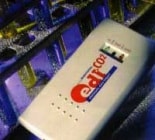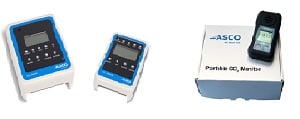Dry Ice Safety
Dry Ice Directory
Use Dry Ice Safely

Safe Handling
of Dry Ice
Dry Ice safety is essential for all dry ice use. Make sure everyone understands the dangers of contact and the need for proper ventilation.
Caution: Supervise everyone handling dry ice. You may be liable for any injuries. Keep the area well ventilated at all times.
NECESSARY VENTILATION
Normal air is 78% Nitrogen, 21% Oxygen, and only 0.035% Carbon Dioxide. If the concentration of carbon dioxide in the atmosphere rises above 0.5%, CO2 can become dangerous.
TOO MUCH CO2
Greater concentrations of CO2 can cause quicker breathing, headaches, and sleepiness in some but are otherwise not harmful. Danger! If dry ice has been left in a closed auto, van, room, or walk-in freezer for more than 15 minutes, open doors to allow adequate ventilation before entering. Exit all areas containing dry ice CO2 if you start to pant and breath quickly, develop a headache, or your fingernails or lips start to turn blue. These are signs that you have breathed in too much CO2.
Carbon dioxide is heavier than air.
Because CO2 is heavier than air, it will accumulate in lower spaces. Do not enter closed storage areas that have stored dry ice before airing out completely.
Always provide adequate ventilation.
Always provide additional ventilation for indoor use and monitor yourself and others for shortness of breath and dizziness. A CO2 monitor may be helpful.
Carbon Dioxide Monitor
HANDLING
Dry Ice temperature is frigid at -109F or -78°C. Always handle Dry Ice with care and wear protective gloves whenever touching it. It is harmless if touched briefly, but prolonged contact with the skin will freeze cells and cause injury similar to a burn.
STORAGE
Store Dry Ice in an insulated container. The thicker the insulation, the slower it will sublimate. Do not store dry ice in a completely airtight container. Dry ice’s sublimation to CO2 gas will cause any airtight container to expand or possibly explode. Keep proper air ventilation wherever dry ice is stored. The sublimated CO2 gas will sink to low areas and replace oxygenated air. Suffocation could occur in too high a concentration. There are Commercial Storage Containers available for safer storage.
Bonar Plastics
PICK-UP TIME AND TRANSPORTING
Plan to pick up the dry ice as close to the time needed or have it delivered to your location on the day required. It sublimates at a rate of around 10% every 24 hours, depending upon its insulation. If transported on a flatbed truck, make sure to protect it from rain, or you may look like a special effects vehicle with smoke-like fog pouring out behind you. One truck was stopped by the police when this happened.
BURN TREATMENT
Treat dry ice burns the same as heat burns. See a doctor if the skin blisters or peels off. Otherwise, if only red, it will heal at the same rate as a burn. Apply antibiotic ointment to prevent infection and bandage only if the damaged skin area needs to be protected.

TILED FLOORS OR COUNTERTOPS
Do not leave dry ice on the tiled countertop or floors as the extreme cold could crack it.
MSDS
Here are two Material Safety Data Sheet available online: Airgas https://www.airgas.com/msds/001091.pdf
Praxair www.praxair.com/-/media/corporate/praxairus/documents/sds/dry-ice/dry-ice-ultraice-co2-safety-data-sheet-sds-p4575.pdf
DISPOSAL
Unwrap and leave it at room temperature in a well-ventilated area. It will sublime from a solid into a gas.
DO NOT leave dry ice unattended where children or others could take it. You may be liable for injuries.




















